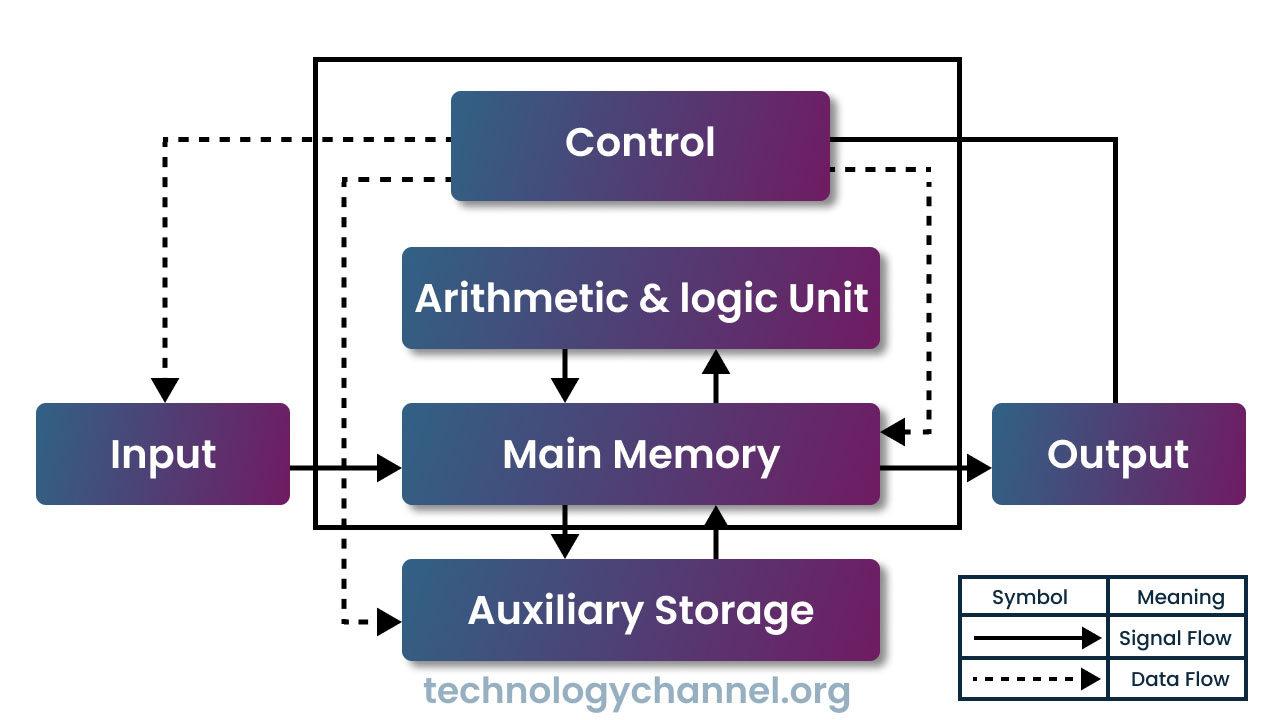Components of Computer System
Computer Architecture
Computer architecture is a science or a set of rules stating how computer software and hardware are joined together and interact to make a computer work.

The main components of computer architecture are as follows:
Input devices:
Input is the data entered into a computer for processing. Input can be in form of text, program, commands and user response. The devices which collect input for processing is called input devices. Keyboard, scanners, digital camera, audio, video are input devices. The main functions of input devices are: accept data, convert data and sends data in binary form to the computer.
Central Processing Unit:
CPU is the main information processor in computer capable of executing a program. CPU serve as “brain” of computer. It processes the raw data and turns it into information. It is linked with input/output devices and auxiliary storage units.
Memory:
Memory is blank space where different types of data, programs and software are stored. The term “volatile” in the context of computer memory refers to memory that requires power to maintain the stored information; it retains its contents while powered on but when the power is interrupted, the stored data is quickly lost. There are two types of memory:
a) Primary memory:
Computer memory that is directly accessible to the CPU of computer. Primary memory is known as volatile memory. Example such as RAM, ROM though ROM is primary memory, it is a non-volatile in nature.
b) Secondary memory:
Memory that supplements the primary memory. It is long-term and non-volatile. Examples are magnetic tape, magnetic disk, etc.
Output Device:
They are peripheral devices that receives or displays output from computer. Output can be in form of words, numbers, graphics, sounds, etc. The basic functions of output devices are: Accepts results, convert binary coded data and supplies converted results to the outside world.